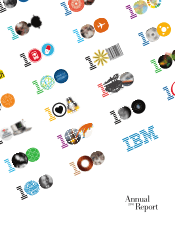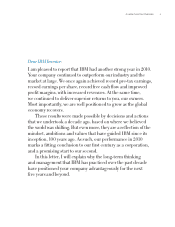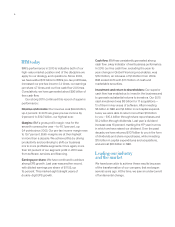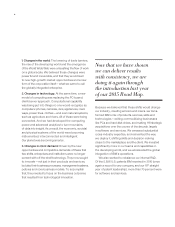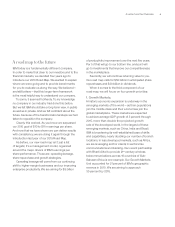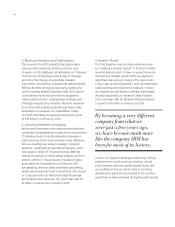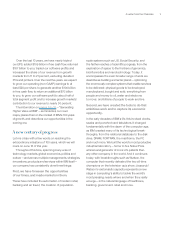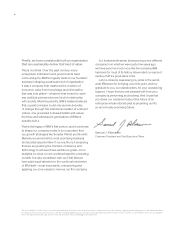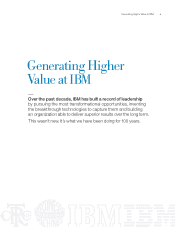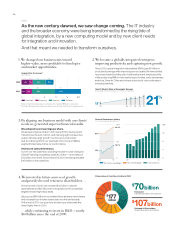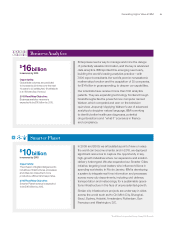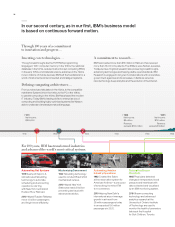IBM 2010 Annual Report Download - page 6
Download and view the complete annual report
Please find page 6 of the 2010 IBM annual report below. You can navigate through the pages in the report by either clicking on the pages listed below, or by using the keyword search tool below to find specific information within the annual report.
1. Changes in the world: The lowering of trade barriers,
the rise of the developing world and the emergence
of the World Wide Web were unleashing the flow of work
on a global scale. We believed these changes were
powerful and irreversible, and that they would lead
to new high-growth market opportunities and a new
form of the corporation itself—what we came to call
the globally integrated enterprise.
2. Changes in technology: At the same time, a new
model of computing was replacing the PC-based,
client/server approach. Computational capability
was being put into things no one would recognize as
computers: phones, cameras, cars, appliances, road-
ways, power lines, clothes—and even natural systems,
such as agriculture and rivers. All of these were being
connected. And we had developed the computing
power and advanced analytics to turn mountains
of data into insight. As a result, the economic, societal
and physical systems of the world were becoming
instrumented, interconnected and intelligent.
Our planet was becoming smarter.
3. Changes in client demand: Driven by the new
opportunities and competitive demands of these first
two shifts, enterprises and institutions were no longer
content with off-the-shelf technology. They now sought
to innovate—not just in their products and services,
but also their business processes, management systems,
policies and core business models. To accomplish
that, they needed to focus on the business outcomes
that resulted from technological innovation.
Now that we have shown
we can deliver results
with consistency, we are
doing it again through
the introduction last year
of our 2015 Road Map.
Because we believed that these shifts would change
our industry, creating winners and losers, we trans-
formed IBM’s mix of products, services, skills and
technologies—exiting commoditizing businesses
like PCs and hard disk drives, and making 116 strategic
acquisitions over the course of the decade, largely
in software and services. We amassed substantial
cross-industry expertise, and reinvented the way
we deploy it, shifting skills and decision making
closer to the marketplace and the client. We invested
significantly more in our teams and capabilities in
the developing world, and we accelerated the global
integration of IBM’s operations.
We also worked to rebalance our internal R&D.
Of the 5,896 U.S. patents IBM received in 2010 (once
again a record for any company, and our 18th straight
year of patent leadership), more than 70 percent were
for software and services.
4

